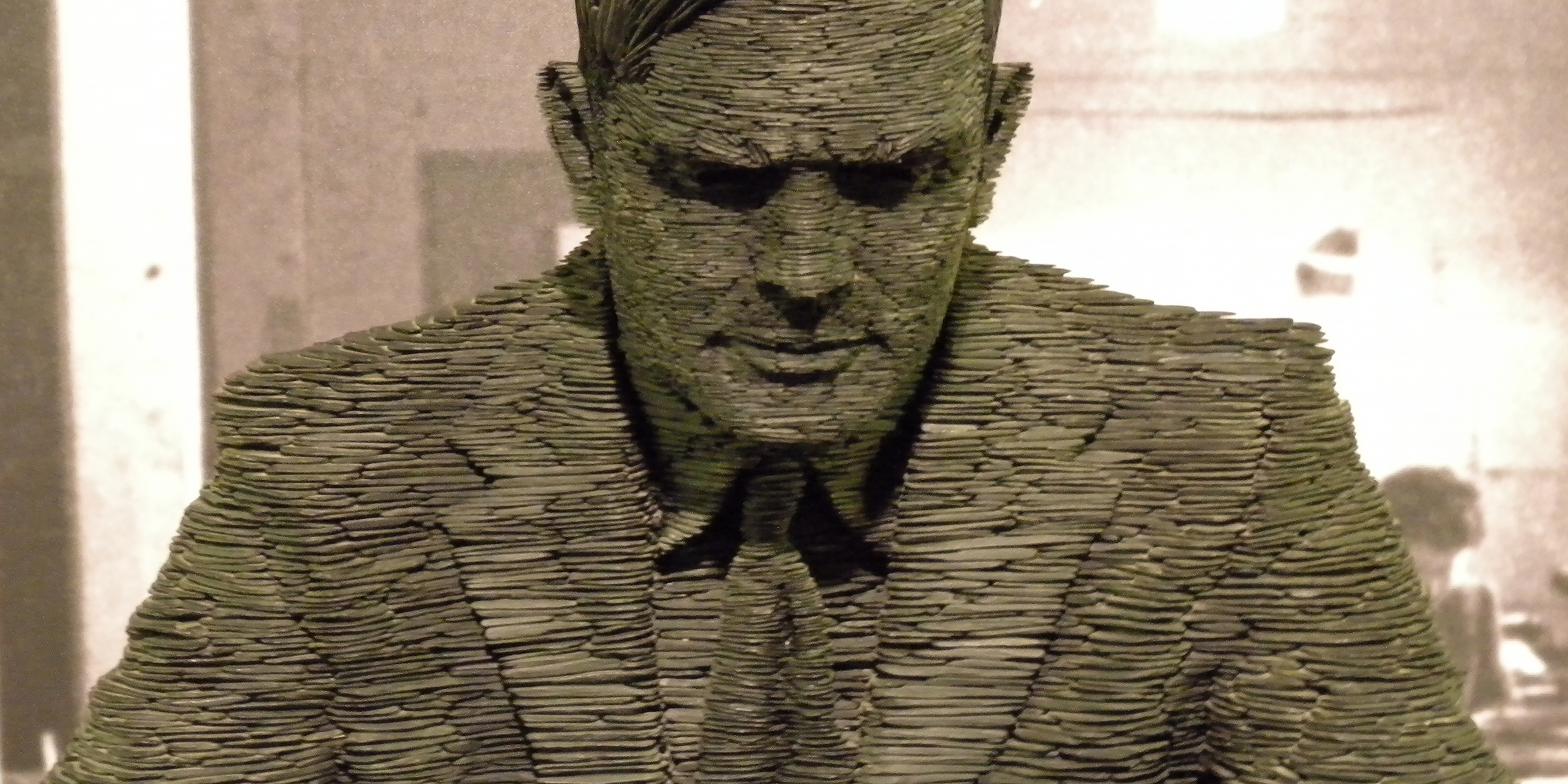Originally published 25 November 1996
“Don’t ask, don’t tell.”
In October [1996], the Supreme Court let stand a policy that allows gays to serve in the military as long as they keep their sexual orientation secret. The policy is a compromise worked out between President Clinton and Congress during the early months of Clinton’s first administration.
The president had promised during his 1992 campaign to lift the ban on gays in the military. Congress, the Pentagon, and the American public were not ready to yield so much. “Don’t ask, don’t tell” was a way of having our cake of social justice and chewing our prejudices too.
It is an episode that recalls the sad fate of Alan Turing, told in Andrew Hodges’ fine 1983 biography. Turing was one of the best scientific minds of our century, sometimes called the Founder of Computer Science, a gay man whose “if you ask, I’ll tell” personal policy had tragic consequences.
His story is worth re-telling. It tells us something about how science works. And it tells us something about our very unscientific prejudices.
Science projects an image of cool objectivity. Read an article in any science journal and you might think the work was done by a machine. You will find no reference to the emotions or motivations of the researcher, no mention of the researcher’s age, gender, nationality, politics, or religion. No mention of the researcher’s sexual orientation.
Scientific communication is impersonal by design. It is a way to ensure the objectivity — insofar as objectivity is possible — of scientific knowledge. Good science shouldn’t depend upon who did it, or why. It should be measured only by standards of logic and experiment.
Alan Turing’s scientific publications are masterpieces of logical thought that laid out the foundations of modern computer science and the science of artificial intelligence. The papers are profoundly and aseptically mathematical. The story behind the papers, however, is thoroughly human.
As a schoolboy in England in the late 1920s, Turing was a dreamer. His exasperated teachers did not always recognize his talent, and he garnered his share of negative reports.
In 1928, at the age of 16, Turing fell powerfully under the spell of a slightly older school chum, Christopher Morcom. There was nothing explicitly sexual about their relationship. The boys were friends and intellectual comrades. Nevertheless, it seems clear that Turing was deeply in love.
In 1930, Morcom suddenly fell ill and died. Turing was shattered. He turned his attentions to the question of how the human mind, and Christopher’s mind in particular, was embodied in matter. Could there be any way in which a mind might survive the death of the body?
According to his biographer, Turing’s longing for his dead friend sparked a lifelong interest in the mechanical embodiment of thought. Turing’s first important work, On Computable Numbers with an Application to the Entscheidungsproblem, laid out a theory of computation that all subsequent work has built on. “Entscheidungsproblem” refers to the question of “decidability” — how do we know something is mathematically true, and how can we know for sure?
During World War II, Turing turned his considerable genius to cryptoanalysis, the breaking of codes. He was a leader of the British team at Bletchley Park that broke the famous “Enigma” code, which the German high command used to communicate with its Atlantic U‑boat fleet. The breaking of the code is generally credited with turning the Battle of the Atlantic in favor of the Allies, and perhaps deciding the outcome of the war.
During all of this time, Turing’s tacit position within the military establishment was “don’t ask, don’t tell.” By now he was leading an actively gay life, at a time when homosexuality was a criminal offense in Britain, punishable by imprisonment.
After the war, Turing’s brilliant theoretical and practical work on the use of mechanical and electronic machinery for breaking complex codes led directly to the first electronic computers. Turing, as much an anyone else, can justifiably be called the inventor of the digital computer.
Always in the background was the issue of Turing’s sexuality. In early 1952 the police came to Turing’s house to investigate a burglary. They discovered something that turned out to be far more serious — Turing’s sexual relationship with another man.
He did not deny the relationship. It was inconceivable to Turing that his private life might be of interest to Her Majesty’s government. He was arrested, brought to trial, and convicted. As an alternative to prison, which would have interrupted his scientific work, he agreed to a course of hormone injections to neutralize his libido — a kind of chemical castration. He chose, says his biographer, “thinking” and sacrificed “feeling.”
No one knows exactly what or how he suffered in the period that followed. On June 8, 1954, he was found dead by his housecleaner, a half-eaten cyanide-spiked apple at his bedside. The coroner’s verdict was suicide. He was 41 years old.
Don’t ask, don’t tell. The man who invented the Digital Age, who served tirelessly and effectively to end a terrible war, was asked. He told — and one of the most rational scientific minds of our time was sacrificed to irrational intolerance.



